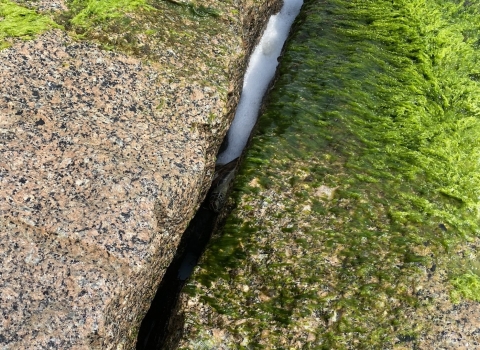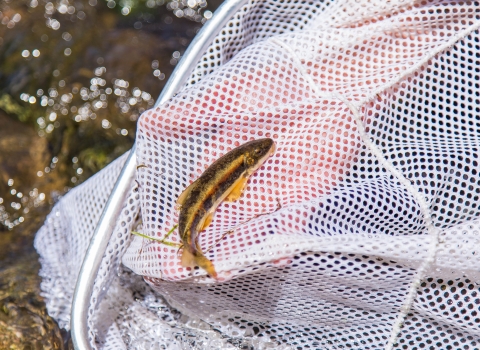MISSOULA – As part of ongoing efforts to monitor grizzly bears in the lower-48 states, the U.S. Fish and Wildlife Service and several partners will continue genetic sampling efforts during the summer of 2023 to document grizzly bears in southwest Montana. This multi-year project collects data to assist biologists in understanding more about the grizzly bears that have been dispersing throughout southwest Montana over the past decade.
The Service thanks the U.S. Forest Service (USFS), Montana Fish, Wildlife & Parks (MTFWP), and Defenders of Wildlife for their continuing partnerships from prior years. Gratitude is also extended to new partners for 2023, including the Bureau of Land Management (BLM) and the Montana Department of Natural Resources and Conservation (MTDNRC).
"This project continues to be a valuable effort towards a better understanding of grizzly bear presence in the upper Big Hole Valley and surrounding mountain ranges," said Vanna Boccadori, the MTFWP Butte Area Wildlife Biologist. "This data allows partners to engage in science-based conversations about managing expanding grizzly bear populations on a working landscape. This project is part of a proactive approach to minimize potential conflicts and allow safe passage of grizzlies throughout southwest Montana to the benefit of both bears and people."
Additional appreciation is shared for nonprofit partners that have donated resources towards the use of cameras for this project, including the Yellowstone to Yukon Conservation Initiative, Greater Yellowstone Coalition, Natural Resources Defense Council, Sierra Club, Vital Ground Foundation, and the National Parks Conservation Association.
The 2021 survey revealed important information about the presence of two grizzly bears in their historic range near the headwaters of the east fork of the Bitterroot River in southwest Montana. Both bears were determined to be unrelated adult males from the Northern Continental Divide Ecosystem. Potential grizzly bear hair samples collected during the 2022 field season were submitted for DNA analysis and results are expected later in 2023.
This non-invasive genetic sampling survey uses temporary barbed-wire corrals and remote cameras with a scent lure to attract bears to the sites. As bears climb over or under the barbed wire to investigate the scent, their hair collects on the barbs without causing injury to the bear. The hair samples are then used for genetic analysis.
The 2023 project sites include USFS, BLM, MTFWP, and MTDNRC lands in southwest Montana, between the Bitterroot recovery zone and the estimated current distribution of populations in the Northern Continental Divide and Greater Yellowstone Ecosystems. The primary 2023 study areas include the north Sapphire Mountains, Beaverhead Mountains, Pioneer Mountains, and Anaconda Range.
Sampling sites are located away from roads, campgrounds, trails, and other areas with high human use. The scent lure provides no food reward, ensuring no motivation for bears to linger at the sites. All sampling sites are signed to notify anyone in the site’s immediate vicinity and include contact information for the Grizzly Bear Recovery Program; the public is asked to avoid the area if they come across a site.
More information about grizzly bear conservation and biology can be found from the Interagency Grizzly Bear Committee.
Residents and visitors to grizzly bear country are encouraged to remain bear aware, know how to use and carry bear spray, and to never feed or approach wildlife. Learn more about bear safety.




